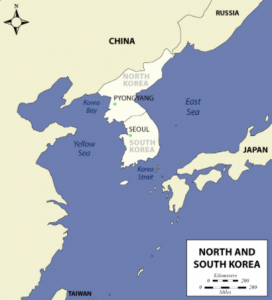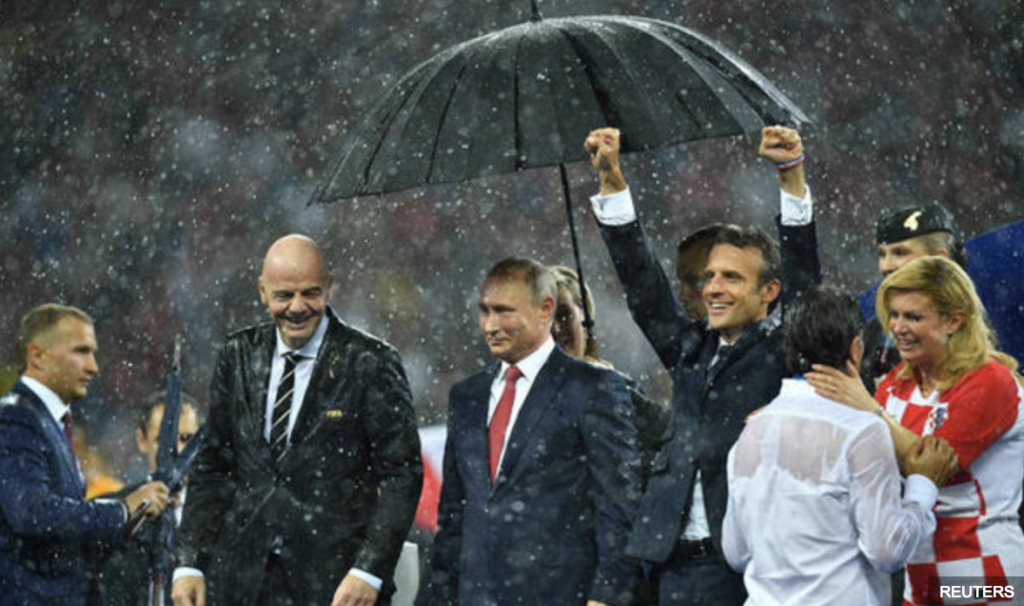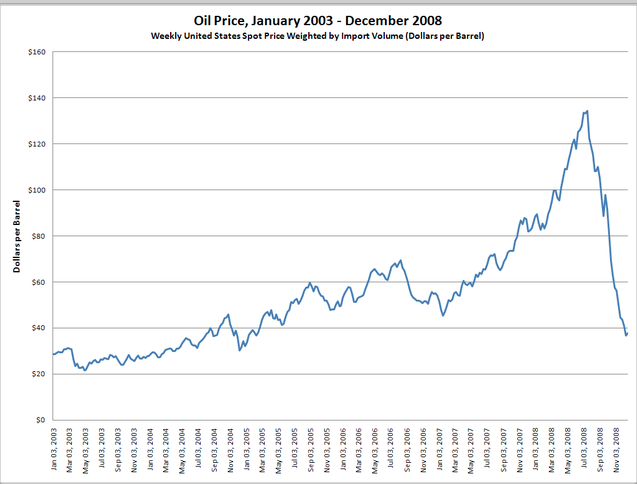
In the shoes of North Korea
In June 2009, I participated in a Negotiation training at the United States Institute of Peace in Washington DC. North Korea had just pulled out of the Six-party Talks two months prior and one of our exercises was to bring North Korea back to the negotiation table. Sound familiar?
One by one participants volunteered to represent the United States, China, Russia, South Korea, and Japan. When it came to North Korea the room went silent. At this point in my career, I was managing a group home for youth in conflict with the law and had been in the counseling psychology field for over a decade. I sat for a moment and thought about it. North Korea now had an eager representative.
I do not remember the exact details of the negotiation process, other than it ended quickly and without an agreement. The frustration in the room was palpable. I was in control because there was nothing to negotiate. They wanted something from me (at least a few did), but I didn’t need anything from them. I said what I wanted and no one could do anything about it. My sense of perceived power was immense. The greater their frustration, the more emboldened I became. Sound familiar?
How the US could deal with North Korea – A Case Study
Fast forward several years later. I was still the director of the group home and in came a referral from Boston. “Jerry” was short and stocky in stature and was as tough as they come. He was heavily gang-involved and had recently survived multiple gunshot wounds. His gang allegiance was so strong, that he’d rather return to be with his crew and possibly get killed than stay in the program. He didn’t care. He wanted out and started behaving accordingly.
Jerry immediately began threatening and posturing towards staff. I went to have a look. It did not go well. My presence escalated the situation. Jerry felt more threatened and as a result, he started threatening me. I had to keep my ego in check and depersonalize the situation. Had I taken a similar threatening approach, having over 600 pounds of combined staff weight near me, it would have ended in an ugly and potentially dangerous physical restraint. The risk of injury to either Jerry or my staff was extremely high. No one wanted that.
I could sense Jerry’s rational state was deteriorating and his desperation was increasing. This young man had everything to fight for and nothing to lose. A physical intervention would have only condoned an old pattern of using threats and violence as a method to fulfill needs. Such a response would have been at a physical and psychological cost, as well as a potential financial and legal cost. Furthermore, how as role models could we help Jerry if we behave exactly as he does? Sound familiar?
Jerry needed to feel safe and assured that we were doing our best to de-escalate the situation. So what did I do? I left. As the director, my responsibility was to ensure everyone’s safety and doing so required me to step back and withdraw. My job was to build trust and model the behavior I was asking of Jerry. Before leaving, I told Jerry that we would do our best to work with him and that his cooperation would be appreciated. Jerry left the next day to another program which he ended up completing. Win-win.
Although a different situation, there are some similarities and key takeaways for how the US could choose to deal with North Korea. As this is a multi-party affair, let’s look briefly at the five other countries to better understand their perspective and consider alternative peaceful solutions.
North Korea
What does North Korea really want? Ostensibly to become a nuclear power equal to the US and not be threatened by potential US military action. Why does North Korea feel so threatened by the US? First, the United States and South Korea have had a military alliance since 1953. Second, nearly 30,000 US troops are in South Korea, regularly conducting extensive military drills on North Korea’s doorstep. Third, Japan, which is only 600 miles away, hosts the largest number of US military in a foreign country–nearly 40,000 troops–and hosts the Seventh Fleet, the largest of US navy’s sea forces. Lastly, is the island of Guam, which hosts a US military base of about 4,000 personnel and is about 2,000 miles from Pyongyang.
Whether real or imagined, North Korea most likely interprets this robust military presence–which could easily attempt to invade a small country–as an imminent existential threat. This fear needs to be acknowledged and seen as a trigger for North Korea. Former US President Jimmy Carter said it best, “Until we’re willing to talk to them and treat them with respect as human beings, which they are, then I don’t think we’ll make any progress.”
Japan and South Korea
From the North Korean perspective, Japan and South Korea are most likely viewed as extensions of the US military arm and threat. One can assume that both Japan and South Korea want peace and security in the region. Kudos to Japan for keeping its cool and not responding in a rash way or with retaliatory comments in light of the two recent missile launches over its country. There is something to learn from their outward show of calmness in an otherwise tense situation. Japan and South Korea are wisely looking for a peaceful global response, and not solely relying on American muscle.
Russia and China
From the outside, both Russia and China hardly appear to be encouraging North Korea to stop their nuclear development and testing. According to a Chinese spokeswoman, “The situation on the Korean Peninsula is complicated and sensitive.” Is it really? It only appears complicated for the US, South Korea, and Japan. China and Russia are barely batting an eye, although they both have a better relationship with North Korea and can be most influential in bringing peace to the region. As for North Korea, their nuclear capabilities are only improving.
Both Russia and China are most likely also not pleased with America’s extensive presence in the area. It could be advantageous for Russia and China for North Korea to have nuclear capabilities. For the two superpowers, North Korea is a check and balance on the peninsula and a thorn in the side of the US.
Recommendations to De-escalate tensions with North Korea
De-militarize the area and step back
The United States must lessen its perceived threat to North Korea by stepping back from discussions and reducing its military presence in the area. Lowering fear and anxiety increases the level of safety in a crisis situation and makes the possibility of dialogue more likely. Russia and China would likely approve of such measures as well and the US could no longer be blamed for raising tensions and escalating fears.
China and Russia need to take a more active role with North Korea
US Secretary of State Tillerson aptly responded after a missile launch over Japan in 2017 when he said, “China and Russia must indicate their intolerance for these reckless missile launches by taking direct actions of their own.” Russia has been relatively quiet stating that more sanctions are not the answer. China only states that “all parties should exercise restraint”, however, North Korea seems to be exempt from this plea. One begins to wonder what they both truly want as an outcome.
As long as the US, South Korea, and Japan continue responding in kind with threats and displays of military might, China and Russia can continue watching a game that has been playing since 2003 when North Korea withdrew from the Nuclear Non-proliferation Treaty (NPT). The second benefit of the US stepping back and demilitarizing the peninsula and area is that China and Russia will be put in a position to act and not just make comments about what others need to do. The international community would then soon see whether both China and Russia want peace and stability in the area or not.
Positively encourage North Korea to denuclearize
There is a third benefit of the United States taking a back seat and de-militarizing the peninsula and area. North Korea would have a difficult time justifying its reason to continue its nuclear weapons program. This increases the chances of them reducing weapons testing and manufacturing. It also increases the chances of them coming back to the discussion table. If North Korea still continues on its current path, then international consensus could put pressure on North Korea to abandon its nuclear weapons program.
US and Russia need to take action on Pillar 2 of the Treaty on the Non-Proliferation of Nuclear Weapons (NPT)
The United States and Russia need to show the world, not just North Korea, that they are serious about global denuclearization. Why should a country disarm when the ones telling them to do so do not do it themselves? Why should some countries be allowed to have nuclear arms and others not?
The Second Pillar of NPT is Disarmament. It states “all Parties undertake to pursue good-faith negotiations on effective measures relating to cessation of the nuclear arms race, to nuclear disarmament, and to general and complete disarmament.” The second and third points of this pillar must be the focus for all nine nations in possession of nuclear weapons, especially the United States and Russia who each have a nuclear arsenal of around 7,000 capable weapons. Of these, each has around 1,800 that are operational. Next, come China and France with about 300 nuclear weapons apiece.
The North Korean nuclear weapons crisis can happen anywhere, therefore, the threat of nuclear weapons needs to be broadened beyond North Korea. Let North Korea be a reminder of what is at stake if all nations, especially those with nuclear capabilities, do not take the mandates of NPT seriously. Let North Korea be a reminder of how nuclear armament threatens regional as well as global peace and development.
Progress begins when the US does exactly what it is asking of North Korea–denuclearize. The United States, Russia and China must lead by example and fully comply with the NPT mandates. This is active leadership. This is being a leader in a nuclear world.
About the Author
Jean-Pierre is a Process Facilitator and Human Systems Expert. He optimizes employee engagement and leadership potential by counseling leaders and enhancing group dynamics. He is the creator of the youth inspired EPIC Model of development and the author of What You Can Learn from Your Teenager: Lessons in Parenting and Personal Growth.





